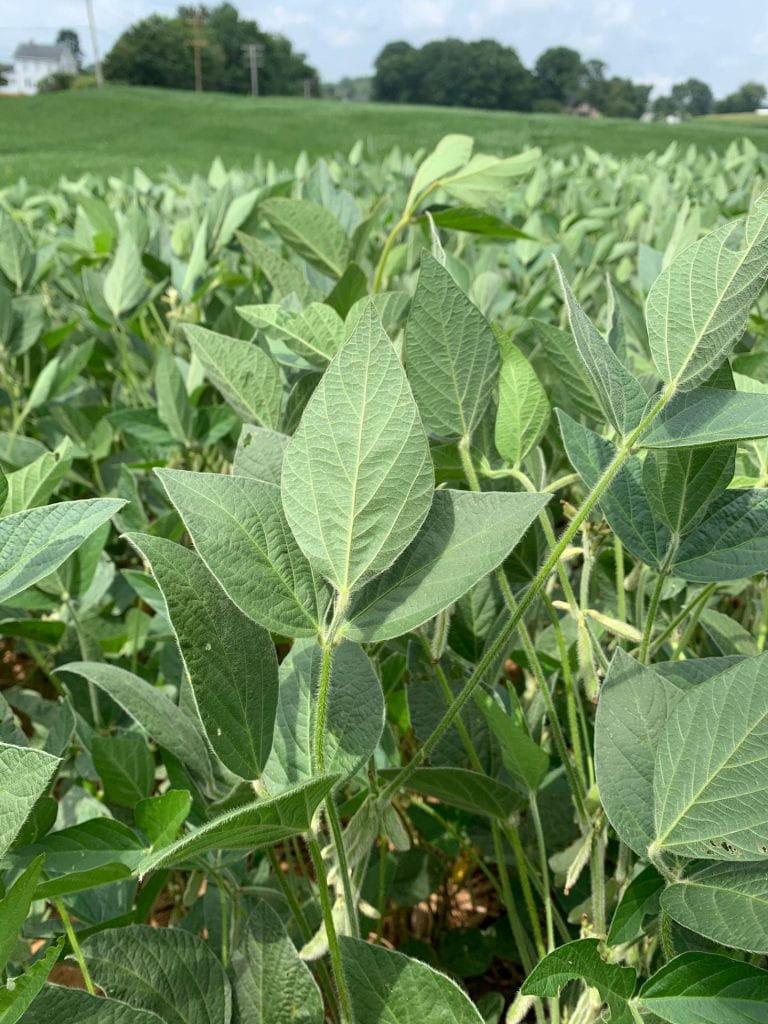Andrew Kness, Agriculture Agent
University of Maryland Extension, Harford County
According to the latest Drought Monitor report, approximately 43% of Maryland is experiencing abnormally dry to moderate drought conditions, predominantly in the central, western and southern eastern shore parts of the state. Rainfall has been sporadic in areas and July 2020 went down as the hottest month on record in Maryland since 1872. Because soybeans flower over several weeks, they can compensate for periods of drought better than crops with a short pollination period, such as corn. As a result, yield impacts from heat and drought stresses can be variable in soybean and difficult to predict.
Soybeans require between 0.25-0.33 inches of water per day, and photosynthesis peaks around 85°F. Further, soybeans are less sensitive to high nighttime temperatures than corn. However, when temperatures peak into the 90s and soil moisture becomes limited, soybeans will become stressed. In an attempt to conserve water, stomata will close, which also inhibits CO2 exchange and thus slows photosynthesis, leading to reduced growth. Soybeans will also allocate more energy to growing roots rather than vegetative tissue.
If drought conditions persist, leaves will begin to invert, exposing their silvery underside (Figure 1). The underside of the leaves reflect more light and helps to reduce water loss in the plant. The middle trifoliate of the leaf will also move upwards or flop over to cover one of the other trifoliates to help shade the leaflets (Figure 1). Nodulation and nitrogen fixation will also be reduced if high temperatures and low moisture persist, further inhibiting growth.

If heat and drought occur during the reproductive phases, soybean plants will abort flowers and pods. Even under perfect growing conditions, soybeans do not have the genetic potential to turn every flower into a seeded pod, so depending on the amount of stress, they will abort between 20-80% of their flowers. Indeterminate varieties have a longer flowering period, therefore if moisture returns, the plant can fill new pods and the effect on yield may not be significant. Furthermore, if moisture returns around R5 (beginning seed), a loss in yield from reduced pod number can be compensated by increased seed size. If drought conditions are present during pod fill, seed size may be reduced. Make sure your combine is adjusted accordingly to ensure that small-seeded beans are not going out the back of the combine.
Overall, the greatest yield reductions in soybean from drought stress occurs between R4-R6. If soybeans have a reduced pod set from stresses during flowering, good yields can still be achieved if soil moisture is adequate between R4-R6. If you intend to gauge soybean yields in the field, it is best to wait until R6. Soybean yields can be difficult to estimate from a field assessment, but this article written by Kelly Nichols provides guidance: https://blog.umd.edu/agronomynews/2018/09/07/estimating-corn-and-soybean-yields/.
